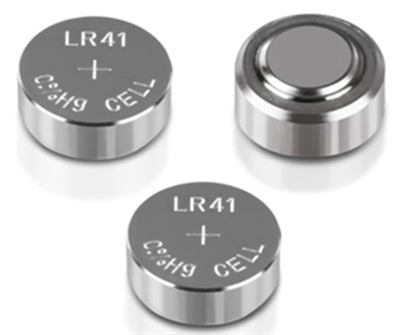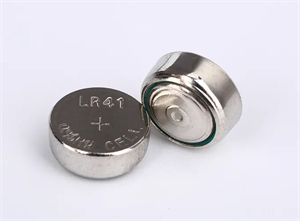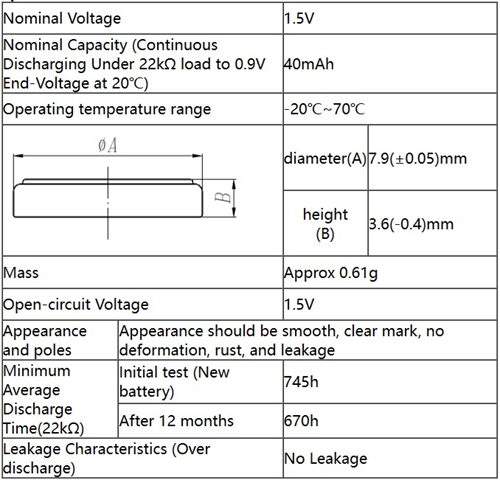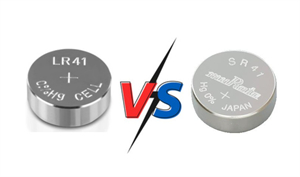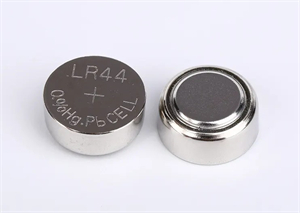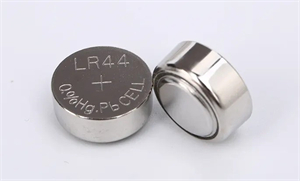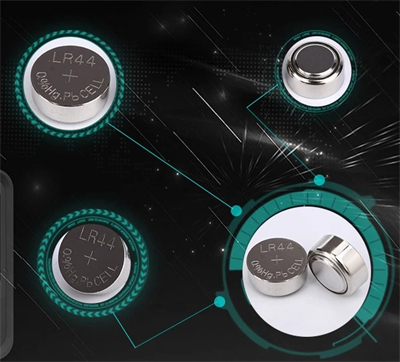HomeBlogLR41 Battery Application Guide and LR41 Equivalent Battery Comparison
LR41 Battery Application Guide and LR41 Equivalent Battery Comparison
In the rapidly evolving landscape of today's digital era, we observe a relentless trend toward the miniaturization of electronic devices. This paradigm shift has inevitably influenced the batteries that are the lifelines of these gadgets. Among these, the LR41 battery, a small alkaline button battery, has carved out its niche. Thanks to its diminutive size coupled with a stable voltage output, it has emerged as an ideal power source for a myriad of portable electronic devices.
The intent of this article is to delve deeply into the nuances of the LR41 battery. We’ll explore the details of its defining characteristics, breadth of applications, and installation methods. Through a detailed analysis of the various sizes of the LR41 battery, we aim to elucidate its role and excellent adaptability in the field of modern electronic devices. This detailed examination will allow us to gain a deeper understanding of how LR41 batteries fit into and power our digitally driven world.
Catalog
Figure 1: LR41 Battery
The LR41 battery, a commonly encountered small alkaline button battery, boasts standard dimensions: a diameter of 7.9 mm and a modest height of 3.6 mm. Central to its functionality are zinc and manganese hydroxide, with the former serving as the negative electrode and the latter, as the positive. Its standard voltage, 1.5 volts, renders it perfectly suited for low-power portable electronics - think watches, calculators, petite flashlights, and hearing aids.
Figure 2: LR41 Battery
Notably, while LR41 batteries, produced by renowned brands such as Toshiba and Maxell, and those from smaller companies or private labels like Tianqiu, may mirror each other in size and facade, the devil lies in the details. Their performance and lifespan often diverge, a direct consequence of subtle variations in internal chemistry and the rigor (or lack thereof) of quality control during production.
Take, for instance, batteries akin in size to the LR41 made by firms like Energizer. They may mimic the LR41's appearance, yet they diverge in their chemical makeup, opting for silver oxide instead. These silver oxide variants, frequently tagged as SR41, are distinguished by a more constant voltage output and an extended shelf life, surpassing their alkaline counterparts. At 1.55 volts, their voltage slightly eclipses that of the LR41's 1.5 volts.
Moreover, silver oxide batteries excel in colder climates, offering enhanced reliability where temperatures plummet. But there's a catch: their price tag. Elevated costs are inevitable, given silver's higher price compared to the more humble zinc and manganese hydroxide.
Essentially, while LR41 batteries are superficially similar in appearance and size, there are significant differences in their appearance. They differ in aspects of their application: chemical composition, voltage stability, operating temperature range, longevity, and cost. Therefore, when selecting a battery, consumers and technicians are advised to carefully weigh these factors and make a selection based on the specific requirements of the application.
LR41 batteries, defined by their specific technical specifications and performance parameters, boast a nominal voltage of 1.50 volts. This voltage is the result of a standard alkaline battery chemistry reaction system, wherein zinc (Zn) acts as the negative electrode and manganese hydroxide (MnO₂), the positive. In this meticulously designed chemical system, the discharge of the battery sees zinc being oxidized, while manganese hydroxide undergoes reduction, thereby generating an electrical current.
Figure 3: LR41 Battery
Typically, these batteries exhibit a capacity ranging from 25 to 32 milliamp hours (mAh). This indicates that, under standard discharge conditions, they can deliver between 25 to 32 mA for one hour. The precise capacity of a given battery hinges on several factors: the chemical makeup, the quality of electrode materials used, and the intricacies of the manufacturing process.
Regarding dimensions, the LR41 battery presents a compact form with a diameter of 7.9 mm and a height of just 3.6 mm. Such compactness renders it an ideal power solution for devices requiring small, efficient batteries - including small electronic toys, calculators, watches, and hearing aids.
The operational temperature range of the LR41 spans from 0°C to 60°C, ensuring stable performance across a broad spectrum of environmental conditions. This feature is important for portable devices, which are often exposed to various temperature environments.
Moreover, the LR41 battery is not limited to its standard alkaline incarnation; a silver oxide variant exists as well. This alternative generally offers a more stable voltage output and superior performance in colder conditions. Nonetheless, the use of silver, a relatively expensive material, means this version tends to be more costly.
In essence, the detailed technical specifications and chemical compositions underline the LR41 battery's role as a versatile and cost-effective power source for numerous small electronic devices. The availability of different types of LR41 batteries, such as alkaline and silver oxide, caters to the diverse performance requirements of various application scenarios, offering tailored solutions to meet specific needs.
Correctly identifying the positive and negative terminals is an essential first step before installing an LR41 battery. In alkaline LR41 batteries, the flat side, typically marked with a "+" symbol or boasting a smoother surface, is the positive electrode. In contrast, the more convex side, usually adorned with a "-" symbol, serves as the negative electrode. This design adheres to international standards, simplifying identification for users.
During installation, take care to align the positive and negative terminals of the battery with the corresponding markings or contacts on the device. Wrong polarity can cause the device to become inoperable, or worse, damage its internal circuitry. Therefore, be sure to double-check the polarity indication on the device – this is a step that should not be overlooked.
Pay special attention to the metal contacts inside the device. These small, crucial components hold the battery in place and ensure robust electrical contact between the battery and the device. If these metal pieces are bent, damaged, or misaligned, poor battery contact may ensue, jeopardizing the device's normal operation. In such cases, gently repositioning the metal piece can help, but exercise caution to avoid additional damage.
It's also vital to ensure that both the battery and device are clean. Dust, dirt, or corrosion can insulate the contacts, obstructing electricity flow. Before installing a new battery, a gentle wipe of the battery and device contact points with a clean cloth can significantly enhance both performance and reliability.
The key to proper installation and optimal performance of the LR41 battery in various devices lies in meticulous polarity identification, precise battery alignment, careful inspection and adjustment of metal contact tabs, and ensuring the cleanliness of contact points. By attending to these details, you can significantly enhance the functionality and lifespan of your devices.
The LR41 battery’s compact size, measuring just 7.9mm in diameter and 3.6mm in height, and its stable performance have made it the preferred power solution for a range of low-power portable electronics. Its structure consists mainly of zinc and manganese and provides a stable voltage of 1.5 volts. A battery's stable discharge profile plays an important role in ensuring the reliable operation of electronic devices throughout their service life.
Figure 4: Various Applications of LR41 Batteries
Diving into its utility, the LR41 shines in environments where space is at a premium and weight is to be minimized. Consider the realm of timekeeping devices; here, the battery not only offers enduring power but is also instrumental in ensuring time is kept with precision. Laser pointers benefit too—thanks to the LR41, these devices boast enough juice to sustain the laser diode's continuous glow, all the while fitting snugly into their sleek designs. The medical sector, with gadgets like blood glucose meters and heart rate monitors, relies on the LR41 for its consistency, which in turn, translates to precise readings and extended operational life.
When it comes to bulkier apparatuses, such as audio recorders and cholesterol testers, the LR41 might offer a limited current, yet its stable voltage output and longevity render it a perfect match. Furthermore, in the domain of children's toys and assorted low-power electronics, the LR41's adoption is widespread and celebrated for its safety and dependability.
The selection of LR41 batteries demands mindfulness. Initially, ensuring the device's voltage and current necessities align with the battery's capabilities is paramount. Additionally, compatibility—considering the battery's size and form factors—requires a glance through the device's manual or an inspection of the battery compartment's inscriptions. Moreover, as battery performance can wane over time and under varying environmental conditions, opting for reputable brands and fresh batteries is advisable for peak performance.
In essence, the LR41 battery's broad utilization is attributed to its compact configuration, consistent voltage supply, and extensive compatibility. Whether it's powering conventional timepieces or cutting-edge medical equipment, the LR41 stands as a dependable energy source, securing the accuracy and steadfastness of an array of devices.
LR41 batteries, predominantly using alkaline chemistry, consist of zinc (Zn) as the negative electrode and manganese hydroxide (MnO₂) as the positive. This combination yields a standard voltage of 1.5 volts, paired with a modest capacity. Perfect for low-power devices. In contrast, silver oxide batteries, often labeled SR41 or AG3, mirror LR41s in appearance and dimensions, yet diverge significantly in internal chemistry. They employ silver oxide for the positive electrode and typically zinc for the negative. This mix not only boosts the voltage to about 1.55 volts but also amplifies capacity.
At the heart of their differences lie capacity and voltage stability. Silver oxide batteries excel in storage, harboring more energy in the same size, thus suiting long-lasting devices. Moreover, they ensure voltage remains stable throughout the discharge cycle, a boon for high-precision electronic devices.
While both battery types find common ground in many applications, the choice hinges on device-specific needs. High-precision medical equipment or devices craving long-term stable power align with silver oxide batteries. For every day, low-power devices, the alkaline LR41 emerges as an economical, practical pick.
Environmental protection and safety underscore the importance of selecting LR41 batteries labeled "zero percent mercury". Traditional button batteries often house mercury, a heavy metal with potential environmental and health hazards. The advent of zero-mercury batteries reflects a commitment to environmental protection and enhanced product safety. Notably, in leakage scenarios, zero-mercury batteries are a safer bet, mitigating health risks to both equipment and users.
It is critical to recognize the difference between the alkaline chemistry of LR41 batteries and silver oxide batteries. Although they are interchangeable in many cases, the specific needs and performance requirements of the device play a key role in battery selection. In addition, choosing zero-mercury batteries is not only beneficial to environmental protection, but also improves safety during use.
Figure 5: LR41 Battery Specifications, Capacity, and Voltage
Battery Selection Essentials: Capacity and Rated Voltage
In the realm of electronic equipment design and usage, batteries stand as pivotal energy sources. Their performance parameters directly influence the equipment's efficiency and reliability. Among the many battery specifications, capacity, and rated voltage play an important role. They are the architects of battery performance.
Rated voltage, that is, the importance of the standard voltage level of the battery when there is no load. It aligns the battery's energy output with the device's power demands. This parameter is more than a number; it's a bridge. It connects the battery's potential difference to the device, shaping compatibility. For electronic devices, an incorrect voltage can lead to malfunction or damage – a short sentence, yet a significant warning.
The Significance of Battery Capacity
Battery capacity, measured in milliamp hours (mAh), encapsulates the energy a battery holds. It dictates the duration of power provision under standard discharge conditions. In the field of portable devices, where continuous power supply is important, capacity takes center stage. A higher-capacity battery promises extended usage and fewer charging interruptions – a boon for mobility.
LR41 Button Battery: A Case Study
The LR41, a prevalent small button battery, typically operates at 1.5 volts. This means a consistent voltage output under normal conditions. However, due to chemical nuances, a new battery's actual voltage might slightly exceed the nominal figure – a subtle variance, usually harmless.
Standard capacities for LR41 batteries range from 25 to 32mAh, sufficient for low-power devices like watches and calculators. Yet, this range isn't set in stone. It varies with chemistry and manufacturing. Silver oxide LR41s, for instance, often boast capacities of 38 to 45mAh. This makes them favorites for longer-lasting applications, such as in medical equipment and precision instruments.
Choosing the right battery wisely, and paying close attention to rated voltage and capacity, is important for optimal operation of your electronic devices. For designers and users, choosing appropriate LR41 batteries is more than a task. It's ensuring device stability and prolonging its life – a responsibility, indeed.
Major categories, features and specifications for SR41 and LR41 batteries:
|
Chemistry
|
Alkaline
|
Silver-Oxide
|
Zinc Air
|
|
Typical Labels
|
LR41, LR736,
AG3
|
SR41, SR736,
SR736PW, SR736SW, SG3, AG3, 192, 384, 392
|
312, ZA312,
Brown Tab, PR41, 7002ZD
|
|
Typical
Capacity
|
25-32 (45) mAh
|
38-45 mAh
|
~180 mAh
|
|
Nominal
Voltage
|
1.5V
|
1.55V
|
1.4 - 1.45V
|
|
Cutoff Voltage
|
1.0V
|
1.2V
|
1.1V
|
|
Notes
|
Voltage drops
over time
|
Very constant
voltage
|
Slightly lower
voltage, large capacity;
mostly used as hearing aid batteries
|
Figure 6: LR41 VS SR41
The Subtlety of Button Batteries
In our digitally dominated era, button batteries, particularly the SR41 and LR41 models, have quietly woven themselves into the fabric of everyday life.
Unraveling the SR41 and LR41 Mystery
Size-wise, SR41 and LR41 batteries mirror each other, both presenting a compact form of 7.9 x 3.6 mm. It's in their inner workings – their chemistry and voltage traits – that their paths diverge. Alkaline, silver oxide, zinc-air: each type dances to its own voltage rhythm, affecting device efficiency. Picture this: the alkaline LR41, humming at a modest 1.5 volts, is a go-to for lower-power gadgets. Meanwhile, the silver oxide SR41, with a slightly elevated 1.55 volts, promises steadier voltage for precision-reliant devices like watches.
The Alkaline LR41
Alkaline LR41 batteries, juggling a 1.5V nominal voltage and a 25-32mAh capacity. They exit at around 1.0 volts, but many devices remain functional even at voltages as low as 0.8 volts. Here's a twist: when a digital thermometer flashes "LO," it might not be a battery SOS but a signal that the temperature is too low for detection.
The Silver Oxide SR41
In the realm of silver oxide SR41 batteries, like the SR736, SG3, and AG3, we find a perfect ally for watches and precision instruments. Their 1.55 volts and 38-45mAh capacity are just the beginning. They boast a stable voltage output and can proudly claim a shelf life of 6-8 years, thriving best in a consistent, 20°C haven.
The Application and Storage
The journey of a coin cell battery from production to power is not a solo act. Its performance and lifespan are entangled with the device it energizes and how it's stored. Choosing the right battery type, tailored to your device's power needs, and storing it wisely away from extreme heat and humidity is important to realizing its full potential.
Despite their twin-like exterior, SR41 and LR41 batteries are distinct in their chemical makeup, voltage nuances, and lifespan, playing a pivotal role in device compatibility. It's these differences that guide users in their quest for the perfect battery match, ensuring both peak performance and longevity for their beloved devices.
In the realm of electronic devices, where precise voltage and stable output are not just desirable but essential, the choice of battery becomes a critical element. Consider the LR41 battery: a small but ubiquitous coin cell battery that plays an important role in countless small devices. Its absence, however, raises a crucial question: what alternatives exist? Enter AG3, CX42 cells, LR736, etc. – brethren in voltage, size, and chemical makeup, capable of fulfilling the roles of their LR41 counterparts in most devices.
Selection of Alkaline Batteries
The quest to replace LR41 batteries often leads to alkaline variants such as V36A, LR736, L736, and AG3. Offering an identical 1.5V voltage and akin mAh capacity, they stand out in terms of cost-effectiveness and availability. Economical. Suitable for budget-conscious applications or those with frequent replacement needs.
Advantages of Silver Oxide Batteries
Silver oxide batteries, epitomized by types such as SR41W, 384, 392, etc., ascend beyond the alkaline LR41. They deliver a superior voltage of 1.55V and a robust capacity of 38-45mAh. Ideal for voltage-sensitive gadgets like watches and digital thermometers. Their chemical stability ensures a consistent voltage output over prolonged use, coupled with versatility in handling varying current demands, positioning them as a reliable and adaptable power source.
Selecting Silver Oxide LR41 Alternatives
In the silver oxide sphere, batteries like SR41W, 384, and 392 shine. Their high capacity and stability make them coveted alternatives. These variants not only mirror the LR41 in size and voltage but also surpass longevity and energy density, elevating them as preferable options.
LR41 Battery Equivalent Table
Navigating the replacement for LR41 batteries necessitates a keen understanding of your device's specific needs – voltage, current capacity, and size compatibility. The ensuing table offers a glimpse into the world of alkaline and silver oxide coin cells: their capacities, voltages, and suitable equipment.
Alkaline battery alternatives: V36A, LR736, L736, AG3, 192, V3GA, and more. Ideal for watches, calculators, and electronic toys.
Silver oxide battery alternatives: SR41, SR41W, SR41SW, SR736, SG3, 384, 392, D392, V392(547), SB-B1. Precision and sensitivity are their realms, serving in devices like watches and digital thermometers.
Zinc-air battery alternatives: 312, PR41, P312, ZA312. These excel in high-energy-demand devices, such as hearing aids.
A myriad of choices exist for replacing LR41 batteries. Selecting aptly ensures enhanced device performance and longevity. Proper battery selection is not just a task; it's a commitment to your device's well-being.
The following is a cross-reference table of LR41, SR41, AG3, 312, and 392 batteries (listed in the table are some of the most popular models now):
|
Battery Model
|
Chemistry
|
Nominal and
Cutoff Voltages
|
Capacity
|
Operating
Temperature
|
Annual
Self-Discharge Rate
|
Discharge
Current
|
|
Duracell 312
|
Zinc Air
|
1.45V, 1.1V
|
185 mAh 1k5Ω
down to 1.1V @21°C
|
0°C to +50°C
|
4 years
unactivated @21°C
|
-
|
|
Duracell D384/D392
|
Silver Oxide
|
1.55V, 1.2V
|
45 mAh 22kΩ
down to 1.2V @20°C
|
0°C to +60°C
|
<10% @20°C
|
70.6μA @1.55V
22kΩ @20°C
|
|
Energizer 312
|
Zinc Air
|
1.4V, 1.05V
|
181 mAh down
to 1.05V, 10/2 mA @21°C
|
-
|
-
|
-
|
|
Energizer 392/384
|
Silver Oxide
|
1.55V, 1.2V
|
44 mAh 22kΩ
down to 1.2V @21°C
|
-
|
~2% @20°C
|
68μA @1.50V
22kΩ @21°C
|
|
muRata LR41
|
Alkaline
|
1.5V, 0.9V
|
45 mAh
|
-10°C to +60°C
|
-
|
-
|
|
muRata SR41
|
Silver Oxide
|
1.55V, 1.2V
|
45 mAh 22kΩ
down to 1.2V @23°C
|
-10°C to +60°C
|
-
|
70μA @1.55V
22kΩ @23°C
|
|
Rayovac 312
|
Zinc Air
|
1.45V, 1.05V
|
(test
dependent)
|
-10°C to +50°C
|
4 years
unactivated @21°C
|
-
|
|
Varta SR736W
|
Silver Oxide
|
1.55V, 1.2V
|
40 mAh 13kΩ
down to 1.2V @20°C
|
0°C to +60°C
|
-
|
-
|
In the realm of battery interchangeability, particularly concerning the LR41 and 312 models, the primary elements to ponder are voltage and capacity. Peculiarly, model 312 batteries, often found powering devices like hearing aids, exhibit a standard voltage fluctuating slightly - typically between 1.40 and 1.45 volts. This is marginally lower than the LR41's standard 1.5 volts.
When it comes to capacity, the 312 batteries shine, boasting up to 160 milliamp hours (mAh). This starkly contrasts with the modest 25-32mAh range of LR41 batteries. Longevity is key; thus, for devices that demand extended operation, the 312's superior capacity ensures prolonged, uninterrupted power.
However, there's more to consider than just voltage and capacity. The physical size and shape of these batteries are equally critical. The LR41, with its 7.9 mm diameter and 3.6 mm height, differs from the 312's dimensions. Such disparities in size and shape can lead to improper seating in the device or compromised battery contact.
Moreover, we must delve into the intricacies of battery compatibility within the circuit design of specific devices. Often, devices are tailored with particular battery slots, catering only to certain models. The device's circuitry, too, might be attuned to a specific voltage and discharge pattern. Even a perfect match in physical dimensions can falter if the voltage or discharge curves diverge, potentially hampering the device's functionality or performance.
In essence, while LR41 and 312 batteries share some similarities - both being button batteries used in compact, portable devices - their interchangeability is not straightforward. Voltage, capacity, size, shape, and the specific device circuit design are all pivotal considerations for compatibility. Users contemplating a battery replacement should diligently consult the device's manual or seek professional advice to ensure the selection of an apt battery type.
When delving into the nuances distinguishing LR41 from LR44 coin cell batteries, one's initial focus naturally gravitates toward their physical dimensions. The LR41, diminutive and unassuming, measures approximately 7.9 mm in diameter and 3.6 mm in thickness; its compact, round form renders it perfectly suited for the snug confines of smaller electronic devices - watches and certain medical devices being prime examples. In contrast, the LR44 presents a more robust profile. It boasts a diameter of about 11.6 mm and a thickness near 5.4 mm.
Figure 7: LR44 battery
Voltage-wise, both battery types operate at the standard alkaline coin cell voltage of 1.5 volts. Yet, a subtle twist emerges with some LR44 variants, pushing the envelope to 1.55 volts. While seemingly trivial, this minor uptick could sway the performance of devices with acute voltage sensitivities. Here, nuances matter.
Shifting the focus to capacity, the disparity becomes more pronounced. The LR41, with its relatively modest energy reservoir, offers a capacity ranging between 25 and 30 milliamp hours (mAh). Contrast this with the LR44, a veritable powerhouse in comparison, boasting a capacity that lies between 80 and 110 mAh. This significant boost in capacity enables the LR44 to sustain longer operational periods, a crucial factor in more energy-demanding applications.
Figure 8: LR44 battery
From an application standpoint, the dichotomy between these batteries becomes evident. The LR41 finds its niche in the realm of smaller electronic devices - think watches, calculators, select medical equipment and miniature toys. The LR44, with its heightened power capacity, is more apt for larger, more energy-intensive gadgets. These include remote controls, alarm clocks, specific camera types, and blood pressure monitors, all owing to the battery's larger size and superior capacity.
Figure 9: LR44 battery
In summary, while LR41 and LR44 batteries share similarities in voltage, their significant differences in size, capacity, and suitability for various electronic devices set them apart. For users, this means the importance of carefully considering these factors when choosing a battery. This ensures not just optimal performance but also the longevity of their device, a decision where details make all the difference.
In summary, the LR41 battery, a compact yet multifaceted alkaline button cell, stands as a cornerstone in the realm of low-power electronic gadgets. We've delved deep, transitioning from its core characteristics through to its broad spectrum of uses, juxtaposing it against other battery variants, and navigating the terrain of suitable alternatives. This intricate tapestry of analysis does more than just furnish technicians and consumers with critical insights for informed decision-making; it underscores the pivotal role of tailoring battery selection to the unique demands of each device. Amidst the relentless march of technological progress, the landscape of battery requirements and their applications is destined to morph.
